Pop Arcana (5)
By:
October 20, 2010
HOODOO YOU KNOW
Like all uncanny things, the Lucky Mojo web site kept coming back, year after year. I would aim my Google launch in any number of directions — a hunt for a blues lyric, a desire to get my hands on the Nightmare Alley DVD or some Abramelin incense, or curiosity about Dr. Strange or America’s erotic countercultures — and my peripatetic link-hop would land me, once again, on one of the domain’s thousands of pages, organized in vaults like The Lucky Amulet Archive, The Lucky Mojo Aleister Crowley Text Archive, and The Eclipse Comics Index. The design of the pages is simple and clear, and with data taking precedence over 2.0 razzamatazz, rather refreshingly archaic — an old-school orientation also betrayed by the site’s collection of occult FAQs and other usenet alt. arcana from back in the day.
So recently I decided to really dive in. The heart of the site is The Lucky Mojo Curio Co. Occult Shop Catalogue, which you might as well go take a glance at right now. Alongside links for familiar mystic stuff — Tarot decks, altar tools, amulets and charms — the site presents a number of more curious categories, at least to esoteric aficionados used to Neopagan or New Age shops: Sachet Powders, Bottle Spells, Custom Made Mojo Hands. Even more startling and wonderful is the graphic design that defines the catalog and the bulk of its in-house offerings: brightly-colored images seemingly drawn from prewar pamphlets or comic books, matched with typefaces reminiscent of classic American commercial signage, all announcing an array of products that sound, at once, exotic and quaint: Aunt Sally’s Lucky Dream Incense Powder, Cast Off Evil Oil, Money Stay With Me Bath Crystals.
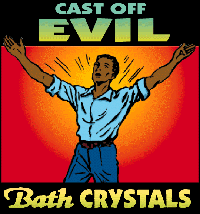
In addition to this array of household magic, the catalog includes links into a labyrinthine library of history and lore. Digging into these pages, one discovers that Lucky Mojo is not New Age nor Neopagan after all, nor does it represent the current of Caribbean religious syncretism that gives us the urban botanicas that in some ways the site recalls. No, Lucky Mojo’s magical current is closer to home than any of these, and yet almost invisible.
That current is hoodoo, although according to Catherine Yronwode, the brilliant and indefatigable woman behind Lucky Mojo, the tradition has many regional names — rootwork, conjure, witchcraft — and for many people remains nameless, as in “that stuff my great aunt did.” Though essentially African-American, hoodoo should not be confused with voodoo or other Caribbean transformations of African spirit possession cults. (If anything, it most resembles Jamaican traditions of obeah, or “science.”) Though hoodoo encompasses a variety of oracular and healing practices, its core moves rely on botanical materials and ordinary household products like soaps and toilet waters, and largely aims for this-worldly results: lottery numbers, love, protection from (or vengeance against) the boss. This pragmatism is also echoed in the tradition’s intensely polyglot syncretism, which fuses African magical styles with streams of, among other things, Cherokee earth ways, Santeria, German folklore, Jewish sorcery, and the popular magic of Scots-Irish immigrants.
In his necessary history Occult America, Mitch Horowitz declares hoodoo “America’s first boundary-free faith.” He also shows how hoodoo was transformed by the emerging commercial marketplace of the late nineteenth and early twentieth century, when mail-order catalogs and chains of urban supply shops standardized some hoodoo practices while providing a cornucopia of new items for imaginative appropriation. Products developed for secular purposes — like Florida water or Hoyt’s cologne — transformed into healing potions. The resulting magical transformations were not limited to the United States — San Pedro shamans in Peru still love to spritz with Florida water.
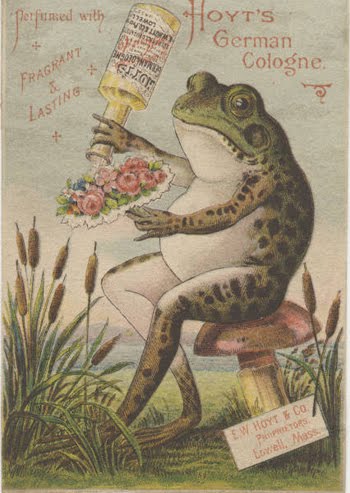
Yet despite hoodoo’s far more pervasive presence in North America, it remains startlingly unreckoned within America’s vast religious consciousness, including the official annals of African-American faith traditions. Perhaps the most visible (if cryptic) marks that hoodoo has left on the culture at large are all the mojo hands and goofer dust that rock fans encountered (and misunderstood) through the blues, and that Yronwode has cataloged in Lucky Mojo’s remarkable Hoodoo and Blues Lyrics archive. I’m sorry Mick — she’s a hoodoo queen.
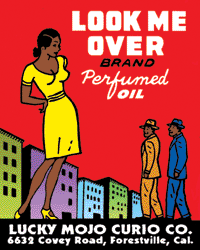
The Lucky Mojo Curio Co. lies up a driveway on a residential street a block or so from the tiny commercial crossroads of Forestville, CA. A large barn stands before you when you first pull up, its side emblazoned with fat block letters declaiming a phrase lifted from the backroads of Tennessee — See 7 States from Beautiful Rock City. Inside the main shop, scratchy old-time jazz is playing, and the products are neatly displayed on lovely old wooden shelves. There are Tibetan prayer flags and Shiva statues about, but the usual Northern California New Agery is largely superseded by a charming and classic air of exotic rootsy Americana. Poke about and you will find Hoodoo spell kits, “Coon Dongs,” human finger-bones, reprinted lucky numbers dream guides, jars of coltsfoot and huckleberry, snake skin sheds, and icons of the narco-saint Malverde. Dusty, an enormous statue of a bearded wizard that stands by the door, is matched by his pal Lefty, a fully-articulated human skeleton who usually lies concealed in a creaky old casket leaning against one wall and that may have once been used for ceremonial rites.
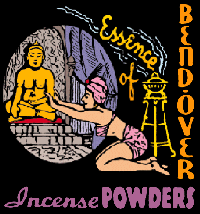
While I wait for Yronwode to get off the phone, I chat with Nagasiva, a bright-eyed, disarmingly present, and very knowledgeable Internet habitue I hadn’t seen since I wrote a piece on “technopagans” for Wired back in the what-you-could-get-away-with 90s. Nagasiva, who wears a knitted skull cap and a very long braided beard, met Yronwode over a decade ago; though many years separate them, the older woman became his guru and wife, and he her office assistant and research crony. I ask him how hoodoo’s folk magic related to the Neopagan and occult scenes that had absorbed him in his earlier days. “I used to see this kind of magic as dangerous, even fraudulent. Little bottles of oil with comics on them and purposeful uses? That was to me something you should beware of.” But over the years he became more and more fascinated with materia magica, and with the worldly aims that saturate living folk magic traditions around the world but that white Neopagans largely shun because, he says, of the transcendentalist prejudices that often underlie their purported embrace of the material world. He tells me that when Lucky Mojo set up shop in the dealer area of Pantheacon — a venerable and highly entertaining annual gathering of Bay Area pagans and magic users — tons of flak and bad vibes were directed their way. They no longer attend.
Yronwode arrives, a diminutive and self-proclaimed “obsessive polymath.” She leads me next door, to an office that also serves as a museum for her amazing collection of good luck charms, key-chains, fortune-telling tea cups, cell-phone fetishes, and myriad amulets of sex and power. Her charm for the day is a fat round dull-colored disc, stamped with the words “Work Daily to Guard Against Sticking.”
While Yronwode should certainly be classed as a scholar-practitioner of the magic arts, she perhaps could more truthfully be called a scholar-collector. She started her amulet hoard when she was a young kid growing in lefty Jewish Berkeley and discovered hoodoo when she was in high school, when a black shopkeeper in Oakland whose store she stumbled into gave her a spell that resulted in an unexpected invitation to a school dance. She graduated to the itinerant hippie life, but while living in various communes and hitchhiking around the country, Yronwode kept scarfing up objects and folklore. She bought African American curiosities and combed for marvels in the Ozarks. She collected conjure oils but also their recipes, which she would sometimes buy and sometimes just figure out, either by using her preternatural sense of smell to reverse engineer the material or by carefully observing pharmacists as they prepared their concoctions from jars behind the counter.
In addition to her freelance field work, Yronwode also became the kind of person who takes to information technology; indeed, Lucky Mojo owes its existence to the culture of computing. In the early 90s, Yronwode decided to do a book on amulets, and after messing around with Apple’s hypercard stacks she decided to just put her articles online. She took over a luckymojo alt. group originally set up by a Flathead Indian named Lucky W. Donegan, and eventually set up her own domain on the budding web. She hand-coded the site in html 1.0, though now also uses Wikis for her more recent branch-off sites, partly because image-captions show up better on Google page ranks. These days she tries to stay away from Wikipedia, where she vows to no longer write articles but only to correct mistakes. “Wikipedia!” she blurts out. “It’s just misinformation, stupidity, pseudo-skepticism. I hate it! But I love the markup code. It’s so sweet.”
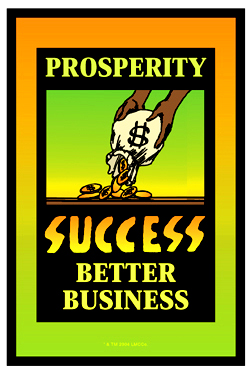
When she first started uploading pages to her Lucky W Amulet Archive web site, Yronwode received an email from an African-American woman who worked in a federal agency in DC. The woman wanted a John the Conqueror root, a gnarled brown earth power that is the glorious crown of hoodoo botany. Yronwode being Yronwode, she knew exactly where the best supplier in DC was located, but the woman didn’t want to visit the store herself because it was in a bad part of town. Noting the irony, Yronwode sent her a root for free. When the woman emailed back for more, Yronwode realized she had a business.
“It was not my intention to become a hoodoo expert,” she says. “Unfortunately it’s just my character. With Lucky Mojo, it was the case of the tail wagging the dog.”
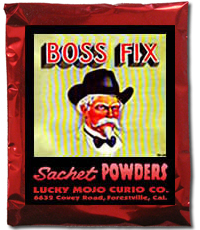
Yronwode insists the shop is effectively a non-profit cultural institution; as an example, she points to their recent establishment of Y.I.P.P.I.E. — the Yronwode Institution for the Preservation and Popularization of Indigenous Ethnomagicology (whose extensive online bibliographies, on neglected and vital topics like spirit boards and crystal gazing, would earn them grant money in the perfect world we don’t live in). As a business, though, Lucky Mojo definitely has its mojo workin’. When she arrived on the scene, the smaller urban hoodoo shops had largely been swallowed up by conglomerates who were cranking out heavily commercialized and inferior stuff. “I wanted to do a sort of mass production of hand-made products.” Yronwode now has ten employees, all of whom have taken her popular rootwork correspondence course and help make sure that every item is properly prayed over. She is proud of her quality product, a quality that her customers clearly recognize as well.
Another important element of Lucky Mojo’s success is the wonderful graphic design of so many of the items, a feature that derives in part from another amazing chapter in Yronwode’s dizzying career: her tenure as a comic book editor and taste-maker. Decades ago, she started writing an influential column in the Comics Buyer’s Guide, and later became editor-in-chief of Eclipse Enterprises during the 1980s, when the company got behind the emerging “graphic novel” and developed a series of innovative and often pointedly political trading cards. While many of the images that grace Lucky Mojo’s wares are the work of Charles C. Dawson, a black designer from Chicago, Yronwode has also hired comic artists like P. Craig Russell, Trina Robbins, and the letterer Gaspar Saladino.

It’s not clear to me how to think about Lucky Mojo’s goods, which is part of the reason they so enchant me. Are they pop culture, a living tradition, a smart sell? Yronwode knows that by becoming the principal online purveyor of hoodoo products, services, and information, she can no longer claim to be a folklore scholar or collector but has instead become a kneader of the “silly putty that is society.” But commerce and cultural miscegenation was always part of the story. By the early 20th century, many of the shopkeepers and herbalists who sold hoodoo supplies were Jews, and Yronwode sees herself in this admittedly problematic tradition. “I realize I am treading a narrow bridge,” she says. “Some will say that its just the Jews exploiting the superstition of others. But it’s much more complicated than that.” Many Jewish suppliers were pharmacists who were unable to serve white communities haunted by the old world phantasm of the poisoning Jew, and so served African-American communities instead. Many of these fine purveyors not only helped preserve African-American folkways but cheekily contributed to them as well, sometimes by selling menorahs and mezuzahs to their black customers. At the same time, mutated Jewish magic, like the spells found in the notorious grimoire The Sixth and Seventh Books of Moses, had already become part of hoodoo through the tradition’s contact with German folklore.
In the face of all fundamentalisms, scientific or Christian, hoodoo’s mongrel witchery of earthly things and household products just makes basic cultural sense. And it is this tradition — of canny American bricolage, of culture as an interactive archive splice, for a reasonable price — that Catherine Yronwode is truly sustaining. While we were in her office, Yronwode pointed out a Harry Roseland print that shows an old black woman ministering to a peach-cheeked Southern bell with a fortune-telling teacup. “The thing is, teacup fortunes like that come from Europe. But it was then taken up by African-Americans. Today it has died down in black communities, but it’s still in use in Scots-Irish communities.”
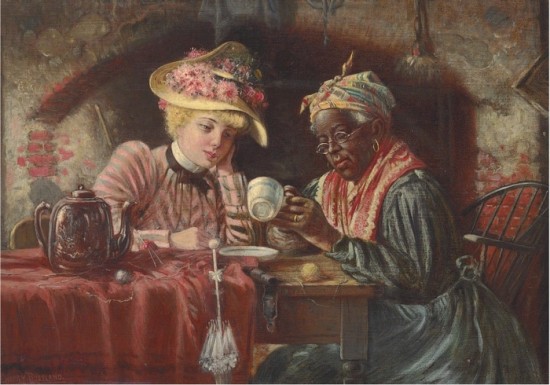
For Yronwode, cross-currents like this are proof that “Hoodoo is as mixed as people’s genes. Most African-Americans also have Native, Jewish, or European blood. And some of the tradition derives from the Scots-Irish, some of whom are so mixed they call themselves ‘mutts’ or ‘Heinz 57.’ Most of my students are black or mutts like that, the melungeons and ‘hillbillies.’ Many have hoodoo in their family background. They will write me and say, ‘My grandmother did this but we’re not black.’” Surprisingly, the one community not often seen at the Curio shop are, once again, the Wiccans and other white Neopagans, who perhaps are made anxious by this rival American earth magic with so much deeper roots. “But as a nice Jew, I try to serve everybody.”
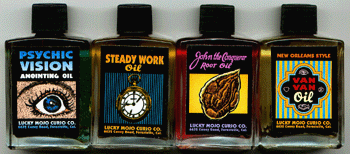
***
Pop Arcana is a limited-run series of columns written for HiLobrow by Erik Davis.

